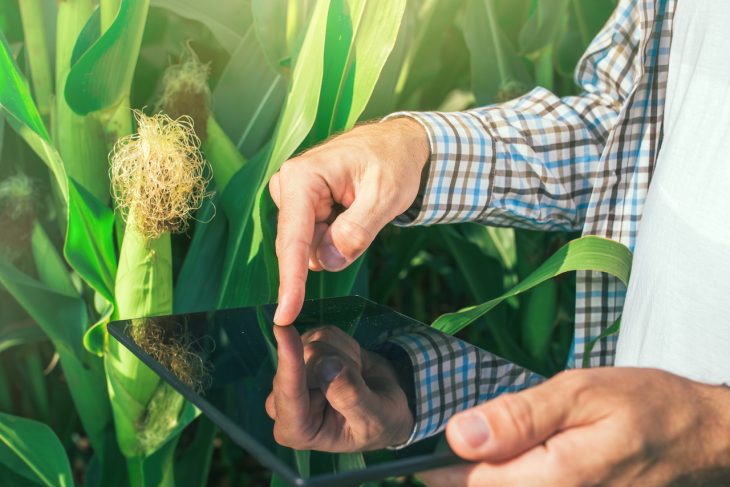In recent years, technology in agriculture, also known as AgTech has rapidly changed the industry. In 2015, the industry’s investment in technology reached a whopping $4.6 billion—and that was three years ago! However, our population is continuing to grow, which has the potential to affect resource availability going forward. In recent studies, it was found that the industry’s output must increase by 60% by 2030.
How do we do it? People in the industry—farmers, food producers—must embrace the digital transformation trends in agriculture. By using technology as a sustainable and scalable resource, we will be able to take agriculture to new heights, keeping farm to fork in our future.
IoT and Sensors in the Field
The IoT is disrupting the agriculture industry – in a good way. In fact, there is extreme potential for using the IoT within the food sector. According to a report by Cisco, there is an estimated $14.4 trillion in value at stake with the emergence of IoT alone. The IoT is simplifying and streamlining the collection, inspection and overall distributing of agricultural resources using sensors on equipment and materials.
Sensors placed strategically around fields along with image recognition technologies are allowing farmers to view their crops from anywhere in the world. These sensors send farmers up to date information in real-time, so changes can be made accordingly to their crops. I don’t have much of a green thumb, but if I had an app that would tell me when the plants in my backyard needed water or some other type of nourishment, I think I would be able to keep them alive longer. IoT sensors in the field are doing the same thing for farmers, but obviously on a larger scale resulting in higher food production with less waste—exactly what this industry needs.
IoT and Sensors in Equipment
Much like the technology within the field, sensors are being placed on agricultural equipment to track the health of the machine and more. Using the term “precision agriculture” tractors and other farming equipment are being manufactured with navigation systems and a variety of sensors. Some of these sensors are built with the capability to compensate for uneven terrain using GPS. Some are built for yield mapping and harvest documentation, right from the cab of the implement. While others are monitoring when tractors need to be serviced. All together, these sensors are reducing the amount of downtime machines experience.
Drones and Crop Monitoring
When you’re working in your garden, you can typically see all of your plants at once, but farmers work in fields that span hundreds of acres meaning the only way they’ve been able to get a bird’s eye view is from a plane. Imagine the return on investment if farmers could visualize their crops using an aerial source—without having to charter a plane. Drones are being used for crop monitoring widely across the U.S. as a means to combat drought and other harmful environmental factors. Drones that produce 3D imaging can be used to predict soil quality through analysis and planning seed planting patterns.
Drones are also being used to spray chemicals on crops while being careful not to penetrate groundwater. Recent studies have shown that drones can increase the speed of spraying by five times compared to other types of machinery.
Farming and Robotics
Much like using robots and artificial intelligence in other industries, robotics within agriculture would improve productivity and would result in higher and faster yields. Such robots like the spraying and weeding robots recently acquired by John Deere can reduce agrochemical use by an incredible 90%.
Other startup robotics companies are experimenting with laser and camera guidance for identifying and removing weeds without human intervention. These robots can use the guidance to navigate between rows of crops on its own, reducing the manpower behind it. Other companies are creating plant-transplanting robots that add a new level of efficiency to traditional methods and finally, automation is being tested for fruit-picking and nut harvesting, something that has always seemed to be too delicate for robotics in the past.



